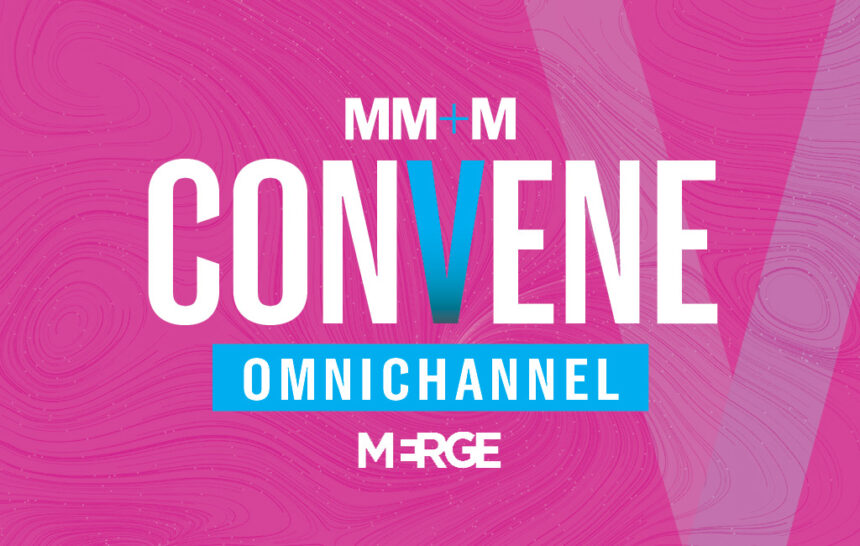Despite the quest for omnichannel activation in pharma, there continues to be more channel diversification than true unification. And in a hybrid world, an evolved architecture is more necessary than before to create successful engagements with healthcare providers (HCPs) and patients.
During a recent webinar, Jack O’Brien, digital editor of MM+M, moderated a discussion between Merge’s Bob Deininger, VP and media leader; Kelly Hopler, VP and strategy leader; and Pat McGloin, chief client officer and life science practice lead, about how to evolve a brand’s omnichannel approach and measure success.
Informing engagement
“Omnichannel is much more than adding more avenues to your multi-channel marketing efforts,” McGloin said, kicking off the conversation. “It’s about creating an experience that’s grounded in re-architecting your approach to customer engagement, moving from siloed media activation to a systems approach to audience experience design.”
To be successful, a brand must have “a deep understanding of the target audience’s decision journey and the learning system in place to be able to provide the right content to the target audience with the right context to help them make more informed decisions,” McGloin explained.
Omnichannel is “a system that helps to flow the user or the customer from that key point of awareness and pull them down into that conversion, as well build trust and your brand’s reputation,” Hopler said. Data helps ensure that “we’re planning across the journey and key touch points based off of our key audiences.” To achieve specific goals, brands must understand not only “what the data is telling us about our target and how to connect with them, but also where the gap is.”
A brand’s goals will determine the media budget and optimal spending. At Merge, competitive spending analysis helps to “see where competitors are spending, how much they’re spending, if we are outspent, channels we can leverage,” Deininger said. Merge then looks at the size of the audience, the total addressable market and “different channels that are uniquely qualified to deliver the content during different phases of the journey.”
Creating the right experience
When approaching omnichannel, start with the five Ps: purpose, position, promise, personality and proof. “Purpose aligns the company internally on the higher calling; positioning is driving differentiation from competitors; the promise is used to crystallize and tell your story from a rational and emotional perspective; personality is critical to creating your identity; the proof is where omnichannel comes in,” McGloin explained. “The experience you create is what makes you and your brand credible.”
It’s critical to create an experience for patients and HCPs that reinforces those five Ps. For example, “if the brand personality is built around simplicity, every touchpoint has to deliver on a simplified experience,” McGloin said. Data insights help a brand “demonstrate to targets that you know them, you value their time and you know what information they’re looking for in their journey.”
The brand’s goal helps shape whether the channel or the message takes priority. The basis of omnichannel is that “we can connect all those tissues together and make sure the story is flowing and traveling with the customer at the right time,” Hopler said. The truth is that “relevance has a deadline.” Which is why it’s critical that everything “works coherently and congruently.”
Whether it’s about awareness or a prescription lift, the campaign objective ”impacts how we set our goals, what metrics we collect and how we optimize against those metrics,” Deininger said.
The evolution of marketing and sales
Marketing and sales have evolved over the past three years. McGloin described three current approaches: the same-old, same-old field sales model; an evolutionary approach with more non-personal promotion; and a revolutionary option that adapts to “how target audiences are seeking to learn about new therapies and taking a channel agnostic approach.”
The truth is that sales reps have less face time with HCPs as a result of the pandemic, and younger HCPs have a digital-first mentality. “When developing strategies of engagement, we need to take into account how they like to learn about new information,” McGloin added. The most successful reps are “adapting, sending more emails via CRM, presenting lunch-and-learns over Zoom and leveraging data from the marketing team to help inform their next best action.”
In addition, omnichannel “can help not only connect thoughtfully with our customers but also how they surround and support our sales reps or any personal promotion opportunities,” Hopler said.
The most innovative companies are “thinking about the creative and the message, and tracking what messages a healthcare professional has received and what’s the next best message to move them further along in that journey,” Deininger said.
It’s critical to “have that conversation about what’s right for where we are now, from a budget and human resource perspective, and also have an eye on that North Star, where we want to be three or five years from now,” McGloin concluded. “Then we can work together to build out that plan to go from a crawl, walk and, ultimately, a run perspective with omnichannel.”







